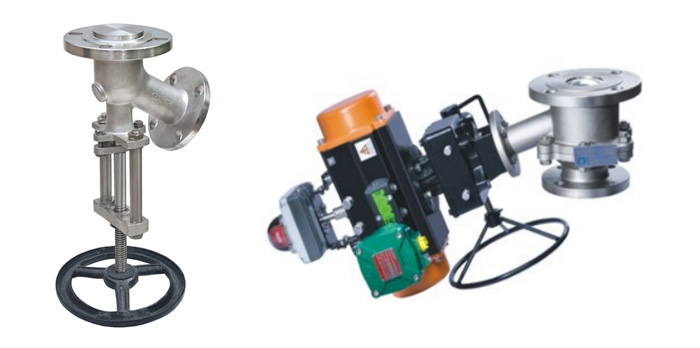
Description
Single piece design Ball Valves, Full port with ANSI 150# are available in sizes 1/2" to 6" with soft seal.
Valve design Standard BS5351 ISO17292.
Other Flange Standards are available on requests.
Pressure Testing standard : ISO5208/ BS5146.
Material of construction : Wide Range of MOC Available for any kind of application.
PTFE/PFA Lined valves available.
Body / Side piece ASTM A351 Gr. CF8, CF3, CF8M, CF3M
Ball ASTM A276 Tp. SS304, SS304L, SS316, SS316L
Seat / seal PTFE / RPTFE
Operation : All ball valves are manually operated with Handle / Lever / Wrenches by default.
(Actuator / Gearbox for all above sizes are availbale upon request.)
Tank flush bottom valves, also known as tank bottom flush valves or flush tank valves, are specialized valves used in storage tanks or vessels to facilitate the complete draining or flushing of the tank contents. These valves are designed to provide efficient and thorough removal of liquid or slurry from the bottom of the tank, ensuring proper cleaning, maintenance, and product transfer operations. Here are the key features and functions of tank flush bottom valves:
1. Bottom Discharge : Tank flush bottom valves are located at the lowest point of the tank, typically at the bottom center, to allow for complete drainage of the tank contents. They provide a direct outlet for the liquid or slurry to flow out of the tank.
2. Flushing and Cleaning : Flush bottom valves are primarily used for tank flushing and cleaning operations. By fully opening the valve, the tank contents can be quickly and effectively discharged, enabling thorough cleaning of the tank interior, removal of sediment or residue, and preparation for maintenance or product changeover.
3. Efficient Draining : Flush bottom valves are designed to provide high flow rates, ensuring efficient draining of the tank contents. They are often sized and selected based on the tank capacity, process requirements, and desired draining speed. Quick and complete drainage minimizes downtime and improves operational efficiency.
4. Sealing and Leakage Prevention : Tank flush bottom valves incorporate sealing mechanisms to prevent leakage and ensure a tight seal when the valve is closed. Common sealing options include resilient or elastomeric seals, metal-to-metal seals, or combinations thereof. The sealing design helps prevent product leakage during tank operation or when the valve is closed for maintenance.
5. Valve Types : Flush bottom valves can be of various types, depending on the specific application requirements. Some commonly used valve types include:
Ball Valves : Ball valves are popular for tank bottom flush applications due to their reliable sealing capabilities and low maintenance requirements. They offer full-bore openings and smooth flow paths, facilitating efficient drainage.
Plug Valves : Plug valves, also known as cylindrical valves, provide a cylindrical or conical plug that can be rotated to open or close the valve. They offer straight-through flow paths and can handle slurries or fluids with particulate matter.
Diaphragm Valves : Diaphragm valves feature a flexible diaphragm that isolates the tank contents from the valve stem. They provide excellent sealing and are suitable for corrosive or abrasive media.
Butterfly Valves : Butterfly valves have a disc-shaped closure element that rotates to control flow. They offer compact design, low pressure drop, and fast opening/closing, making them suitable for larger tank applications.
6. Material Selection : Tank flush bottom valves are available in a variety of materials to suit the specific process conditions and compatibility requirements. Common materials include stainless steel, carbon steel, alloys, or specialized coatings for corrosion resistance or product compatibility.
7. Actuation and Control : Flush bottom valves can be manually operated or equipped with actuation mechanisms for automated control. Manual valves are operated by handwheels, levers, or gears, while automated valves can be actuated by pneumatic, hydraulic, or electric actuators. Automated valves allow for remote operation, integration with control systems, and precise control over the draining process.
Tank flush bottom valves are critical components in industries such as chemical processing, food and beverage, pharmaceuticals, wastewater treatment, and many more. They enable efficient tank cleaning, maintenance, and product transfer operations, ensuring cleanliness, process integrity, and regulatory compliance.
